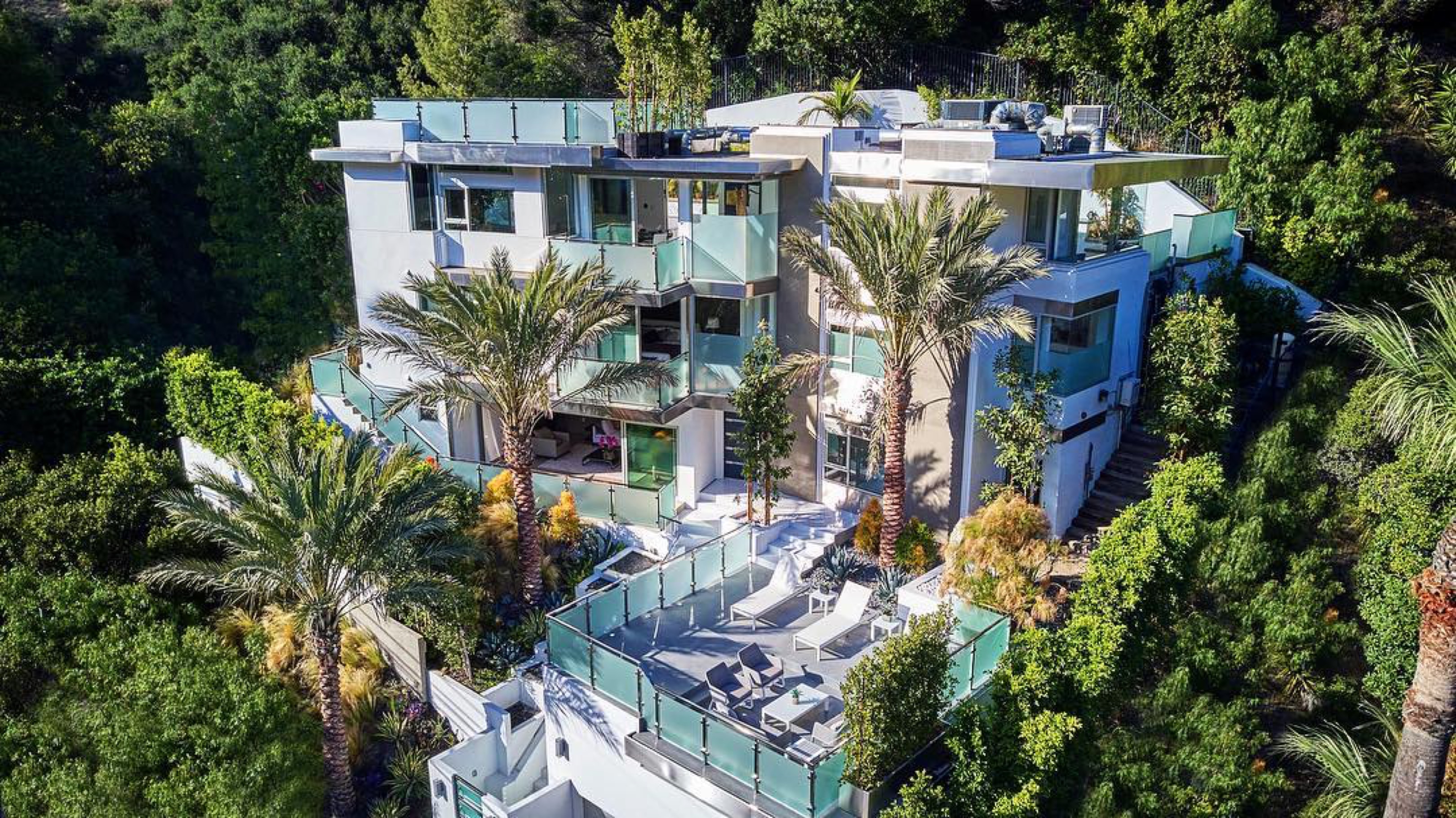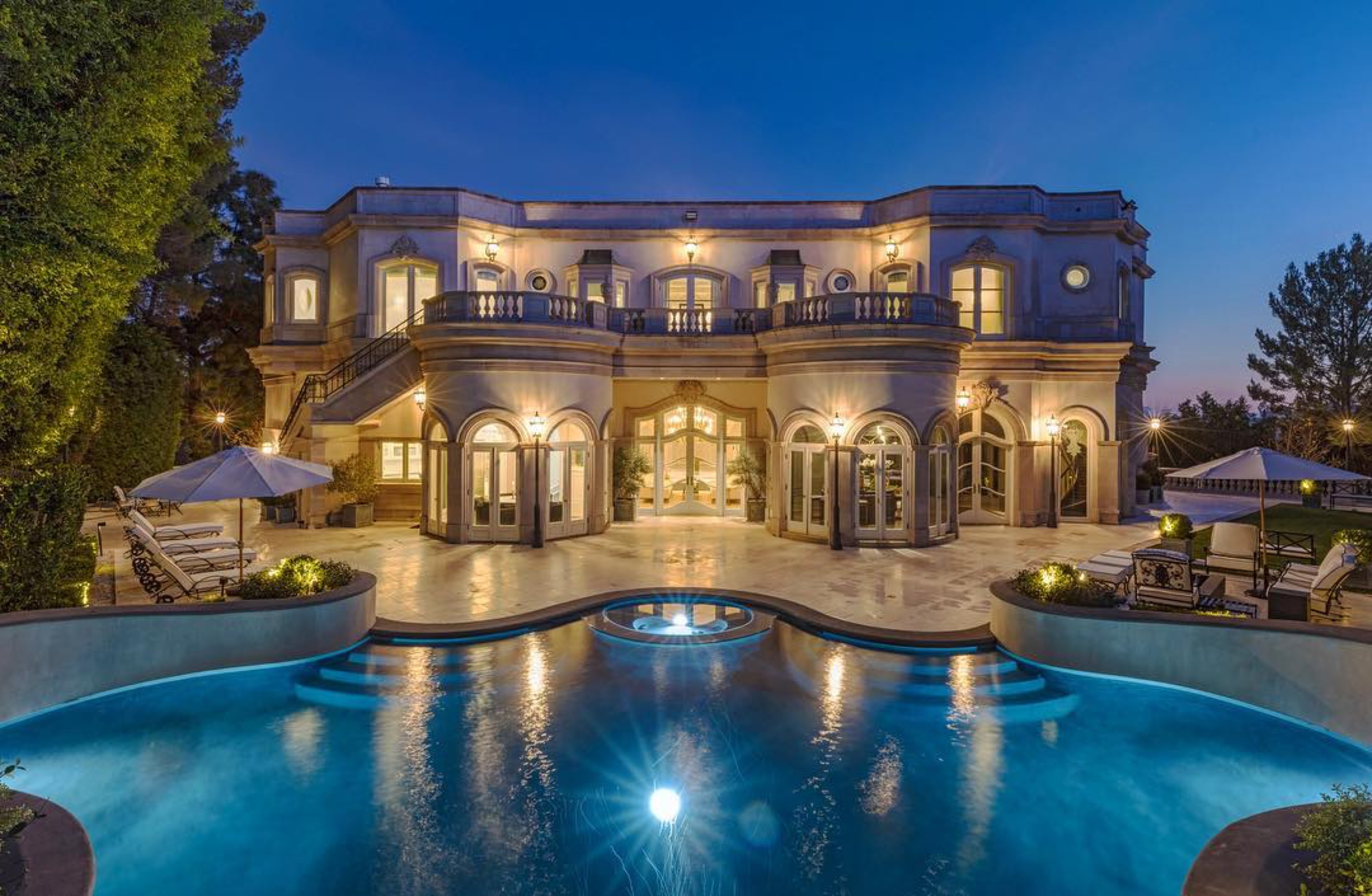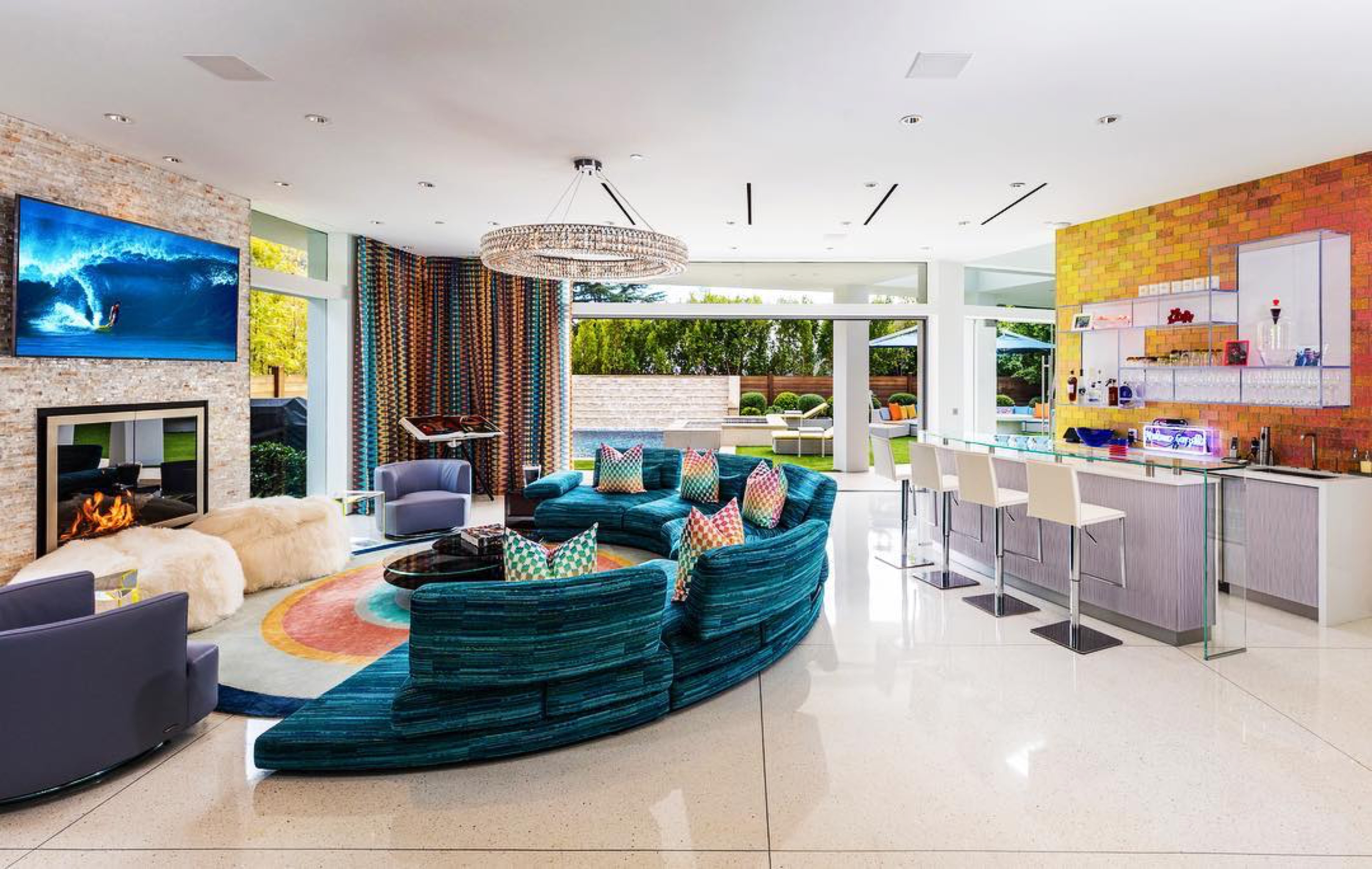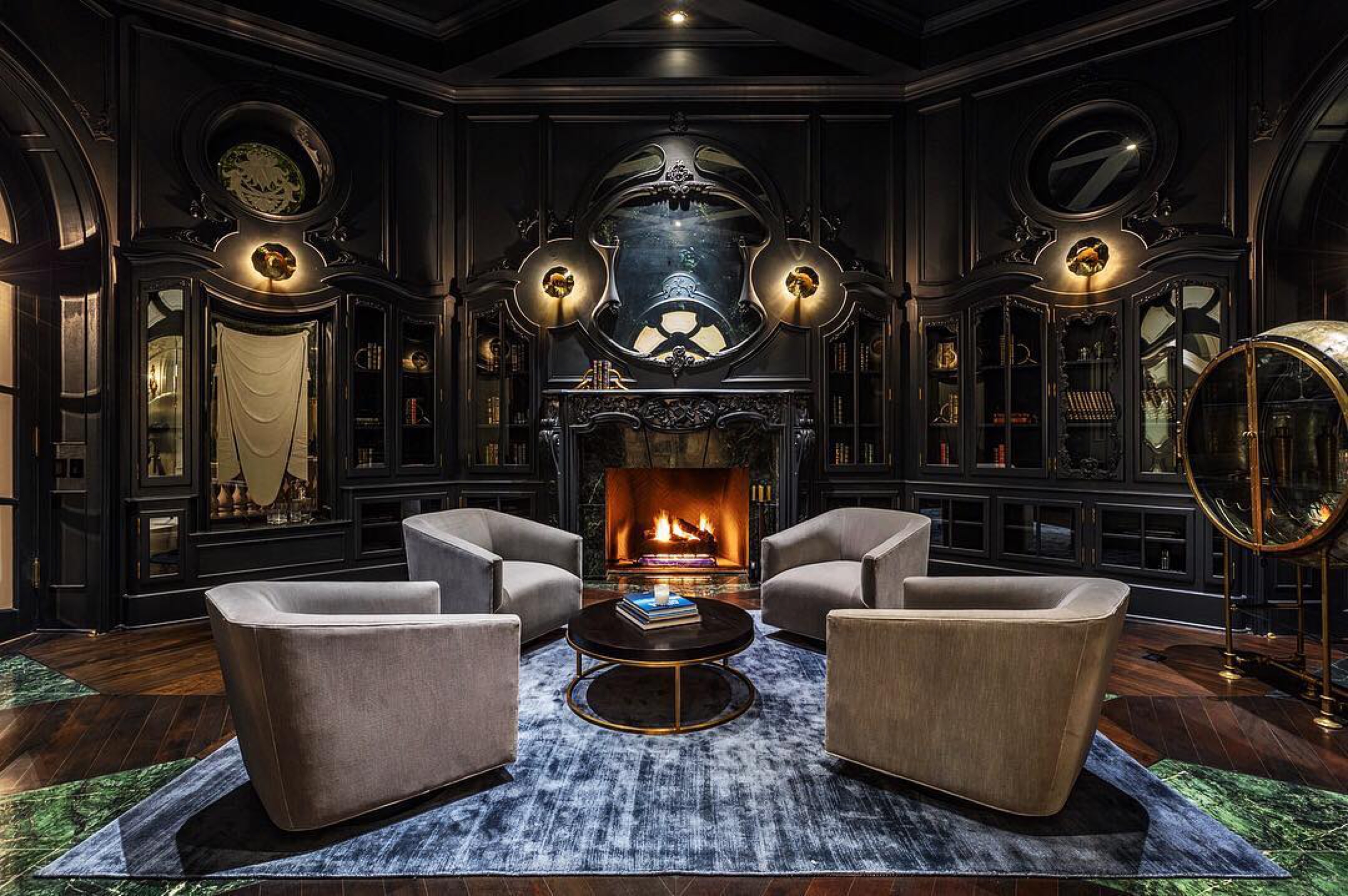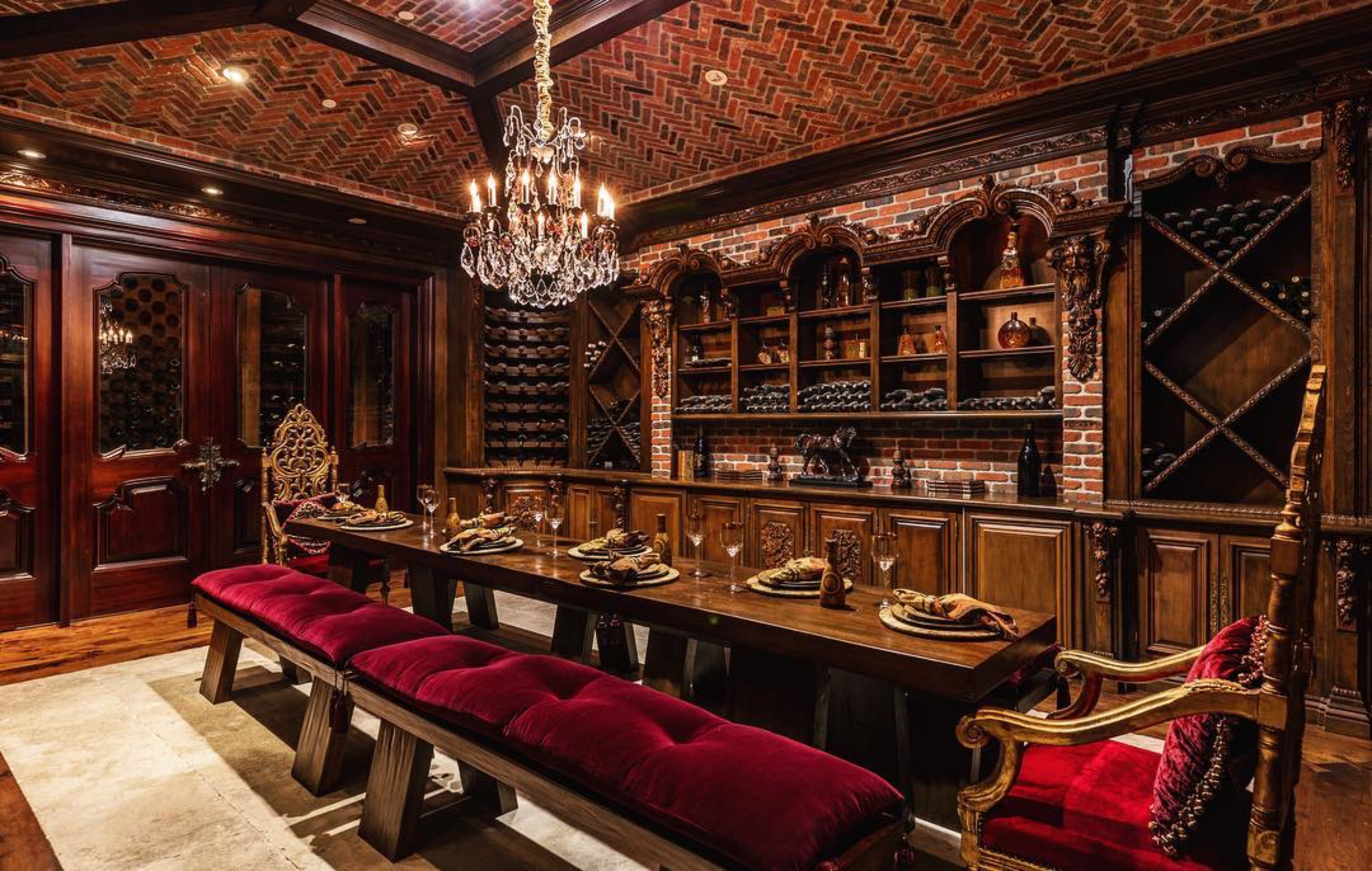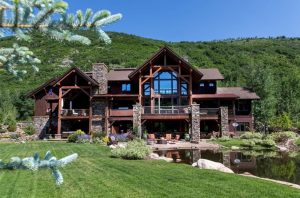The world’s largest and most expensive private homes, sometimes referred to as mega-mansions, routinely sell for tens or even hundreds of millions of dollars. Yet even the lofty price tags underestimate the true cost of mega-mansions, which normally require full-time professional staff and expensive monthly maintenance services. In some cases, the actual economics of mega-mansions are daunting enough to bankrupt their multi-millionaire owners.
Mansion vs. Mega-Mansion
There is no clear-cut definition for a mega-mansion. In many ways, the difference between a mega-mansion and a standard mansion is style and branding. Some mega-mansions have greater than 100,000 square feet of floor space, while others are closer to 20,000. Anything lower than 20,000 might be considered a mega-mansion, although Mansion Homes specifically says “to be called a mega you should at least have 20,000.”
Sometimes the estate can help differentiate a typical mansion from a mega-mansion. Consider the $90 million Elk Mountain Lodge in Aspen, Colorado. At 15,000 square feet in floor space, Elk Mountain does not reach the 20,000-square-foot threshold. However, its 59-acre lot is tucked away inside one of the wealthiest valleys of the Rocky Mountains. Another factor pushing it into mega-mansion territory is that its owner, Bill Koch, is part of one of the richest and most famous families in the world.
Maintaining an Existing Mega-Mansion
When rapper 50 Cent filed for bankruptcy in August 2015, it was revealed his 50,000-square-foot mega-mansion in Connecticut cost $72,000 per month in upkeep. Gardening costs alone were $5,000 per month, according to court documents. The extraordinary home featured 52 rooms, nine kitchens, its own private casino and a full basketball court. Huge homes tend to have illiquid markets, and the entertainer was unable to find a buyer in time to avoid restructuring.
50 Cent, whose real name is Curtis Jackson, became the fourth owner of the estate to file for bankruptcy. This goes to show that even the uber-successful may struggle to afford mega-mansions. The asking price for the home declined from $18.5 million to less than $10 million before Jackson filed.
The world’s largest and most expensive private homes, sometimes referred to as mega-mansions, routinely sell for tens or even hundreds of millions of dollars. Yet even the lofty price tags underestimate the true cost of mega-mansions, which normally require full-time professional staff and expensive monthly maintenance services. In some cases, the actual economics of mega-mansions are daunting enough to bankrupt their multi-millionaire owners.
Mansion vs. Mega-Mansion
There is no clear-cut definition for a mega-mansion. In many ways, the difference between a mega-mansion and a standard mansion is style and branding. Some mega-mansions have greater than 100,000 square feet of floor space, while others are closer to 20,000. Anything lower than 20,000 might be considered a mega-mansion, although Mansion Homes specifically says “to be called a mega you should at least have 20,000.”
Sometimes the estate can help differentiate a typical mansion from a mega-mansion. Consider the $90 million Elk Mountain Lodge in Aspen, Colorado. At 15,000 square feet in floor space, Elk Mountain does not reach the 20,000-square-foot threshold. However, its 59-acre lot is tucked away inside one of the wealthiest valleys of the Rocky Mountains. Another factor pushing it into mega-mansion territory is that its owner, Bill Koch, is part of one of the richest and most famous families in the world.
Maintaining an Existing Mega-Mansion
When rapper 50 Cent filed for bankruptcy in August 2015, it was revealed his 50,000-square-foot mega-mansion in Connecticut cost $72,000 per month in upkeep. Gardening costs alone were $5,000 per month, according to court documents. The extraordinary home featured 52 rooms, nine kitchens, its own private casino and a full basketball court. Huge homes tend to have illiquid markets, and the entertainer was unable to find a buyer in time to avoid restructuring.
50 Cent, whose real name is Curtis Jackson, became the fourth owner of the estate to file for bankruptcy. This goes to show that even the uber-successful may struggle to afford mega-mansions. The asking price for the home declined from $18.5 million to less than $10 million before Jackson filed.
Costs, Services and Permissions for New Mega-Mansions
There is no way to properly generalize mega-mansions or their costs, which by their nature tend to be unique, one-of-a-kind projects. However, they normally require far more planning and legal services than most mansions to build, and they often stretch the limits of building codes or other local regulations.
Russian Billionaire Roman Abramovich, owner of the Chelsea football club, dropped $78 million in early 2016 to buy a mega-mansion on the Upper East Side of New York. Unfortunately for Abramovich, the Department of Buildings refused to approve his plan to combine the three properties already located where he wanted the mansion placed. He finally received the green light in June, but at a price. His legal costs, not disclosed, were considered substantial.
Location is another very important but hard-to-generalize variable. Building a mega-mansion in the sweeping plains of eastern Kansas would be entirely different than building one in Bel-Air. In 2008, businessman Eri Kroh wanted to build a 30,000-plus square foot home on the top of a hill in Bel-Air. He needed permission from the local government to cut the top off of the hill, build a giant retaining wall and move approximately 68,000 cubic yards of dirt. In this instance, the costs of lobbying and preparing the landscape already exceeded the costs of building a large home.
The King of all Mega-Mansions
Those construction costs pale in comparison with a finally finished, Bel-Air construct simply dubbed “The One.” This is a four-acre estate described as the king of mega-mansions with just about every conceivable amenity you can imagine. Dreamed up in 2015 and slated to be the most expensive mansion ever built, the costs of constructing the 104,000-square-foot palace were originally pegged at $500 million. This works out to approximately $5,000 per square foot, which is less than half of what some Manhattan luxury penthouses go for in price.
Miles Niami stands on the rooftop of the most expensive house in America, the latest property he has built for billionaires, and considers the best way to describe his design aesthetic. “Badass,” he grins. “Yeah. Badass.”
Sweeping in every direction is a panoramic view of Los Angeles and the Pacific Ocean. Beneath him is a gargantuan glass and marble residence with moats, four swimming pools, 20 bedrooms, a nightclub, a bowling alley, a cinema and walls and ceilings made of jellyfish aquariums. Price: $500m.
From this hilltop eyrie in Bel Air, LA’s plushest neighbourhood, other estates belonging to the likes of Jennifer Aniston and Elon Musk look puny in comparison.
Niami has named this property, which is due to go on the market later this year, The One. Apt, he says, because there is no other like it. “I don’t think it’s cheeky. I think it’s true.”
The construction of this and other so-called giga-mansions underscores a new gilded age in the United States and especially in LA. Tech tycoons and other plutocrats are splashing fortunes for homes breaking records for scale, opulence and excess.
The splurge comes amid a housing shortage that has fuelled a homelessness crisis, with 57,000 people without permanent shelter in LA county, a ragged army that pitches tents on sidewalks and sleeps in cars, doorways and on the beach. The Los Angeles Times columnist Steve Lopez compared the city’s hilltop mansions to giant tombstones marking the death of humility.
Niami, interviewed this week at The One and another property called Opus, shrugged off a question about inequality. “You’re asking the wrong guy. I try to provide things that don’t exist to buyers that can afford them.”
For him such properties embody audacity and success. “Anyone who buys one of my homes is making a statement about who they are. These properties reflect LA living at its finest.”
The 50-year-old developer is a showman. He drives a Rolls-Royce and sports a Tom Ford jacket, $2,000 sunglasses and a pearly smile. “Braces and veneers,” he says, tapping a tooth.
The Los Angeles native is self-made, the son of a single mother schoolteacher. “The house I grew up in was as big as some of my bathrooms now.” He started out doing makeup for films and graduated to producing B movies, including a 1998 Steven Seagal flick called The Patriot. When films didn’t make enough money he switched to real estate.
His clients include the rapper Sean Combs, also known as Puff Daddy, and the Winklevoss twins, who minted Bitcoin fortunes.
Niami’s brashness has a touch of Del Boy, the wheeler-dealer in the British TV sitcom Only Fools and Horses whose motto was “who dares wins”. “When I do things I just do ’em,” he says. “Wherever it lands, it lands. You only live once. There is no guarantee of anything in life.”
That includes finding buyers. The One, once finished later this year, may be a Xanadu fit for Kubla Khan but if Niami doesn’t get a buyer he risks emulating Ozymandias, another figure from antiquity synonymous not with luxury but hubris and ruin.
Niami is gambling that a billionaire – any billionaire – will find the opportunity irresistible. He bought the lot, which included a 10,000 sq ft house, for $28m in 2012. Six years and lots of bulldozers later a 105,000 sq ft behemoth fills the site. LA has since tightened building regulations so another home on this scale is unlikely.
Size plus panoramic views and interior wonderland will, he hopes, fetch a price that eclipses the $137m paid for a pile in the Hamptons, a US record, and the $300m Saudi Arabia’s crown prince reportedly paid for a French chateau, a world record.
The promotional video is not subtle: a handsome fiftysomething man pulls up in a red Ferrari, strolls past glittering waterfalls and hosts a party where beautiful women throng his VIP booth. “One made for the one,” says the tagline.
Niami’s clients tend to be single men who have made fortunes in tech, finance or oil and own multiple other properties. They apparently would disappoint F Scott Fitzgerald, who declared the rich a different breed. “They just have more cash. They’re normal dudes, down to earth. I want to look bitchin’ and cool but they don’t care, they arrive in a Prius.”
He currently has four other properties at various stages of readiness in or close to Bel Air, Beverly Hills and Holmby Hills, a money zone realtors call the Platinum Triangle.
He gave the Guardian a tour of the Opus, a 20,500 sq ft mansion on a cul-de-sac known as Billionaire’s Row.
It went on the market last year for $100m, including Damien Hirst paintings and a luxury car museum. No one bit so Niami excluded the art and the cars and recently dropped the price to $77.5m.
A dream bachelor pad, says Niami. Televisions slide from the ceiling and spin 360 degrees. Instead of “a pantry with tuna cans” there is a Cristal champagne vault. There is a kitchen but he doesn’t expect it to be used. “Anyone living here will go out for dinner. Or maybe order from the chef in the catering kitchen downstairs.”
Niami is seeking investors for other projects in LA and New York. He has ruled out London, beyond financial sanity even for a badass. “I’d love to but it’s too expensive.”
If it sells, The One will smash the previous world record of $221 million for the most expensive home transaction. In fact, the $500 million tag actually exceeds the projected 2016 budget for Santa Ana, California, by more than $20 million.
Sources: Guardian, Investopedia
Checkout our top mega mansions for sale listed below. To purchase contact concierge here. Proof of funds required.

